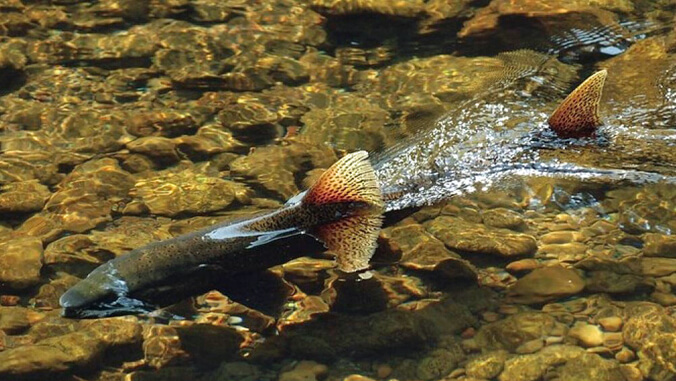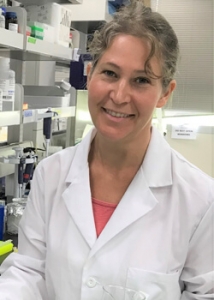
Scientists understand that animals such as salmon, butterflies and birds have an innate magnetic sense, allowing them to use Earth’s magnetic field for navigation to places to feed and breed. A published study led by an assistant professor at the University of Hawaiʻi at Hilo shows magnetite crystals that form in the noses of salmon could be the key to understanding sensory mechanisms that enable magnetic perception.

Renee Bellinger, an adjunct assistant professor in bioinformatics and genomics at UH Hilo spearheaded the team of international researchers who published their research in Proceedings of the National Academy of Sciences. The team highlights that magnetite crystals that form inside specialized receptor cells of salmon and other animals may have roots in ancient genetic systems that were developed by bacteria and passed to animals long ago through evolutionary genetics. The theory is based on new evidence from nanoscopic magnetic material found within cells in salmon noses.
“We weren’t able to definitively prove magnetite as the underlying key to magnetic perception in animals, but our study revealed associated genes as an important tool to find new evidence of how potential magnetic sensors may function,” Bellinger said. “Finding magnetic receptors is like trying to find a needle in a haystack…This work paves the way to make the ‘needle’ glow really bright so we can find and understand receptor cells more easily.”
The paper is published under Bellinger’s Oregon State University affiliation, where she initiated this research as a doctoral student.
According to researchers, the findings can eventually lead to the preservation of the species and be applied to human applications, such as medicine or orientation technology.
UH high performing compute cloud
To help advance genetic research elements in the study, Bellinger used the UH High Performance Computing service, called MANA (a free UH system-wide computational resource that supports data and computationally intensive research) to expand on comparative genomics. She explained that the compute cloud is a significant resource for genetic research, which typically involves data sets that are too large to analyze on a desktop computer.
“It wasn’t until a few years into my post-doc that making comparisons across high-quality genomes became possible, which occurred because of technological advances in long-read sequencing platforms,” she said.
Bellinger has used long-read data to sequence the ʻalalā (endangered Hawaiian crow) genome in a project led by former UH Hilo biologist Jolene Sutton. Recently, she sequenced the genome of Bidens hawaiensis, a plant that is famous for its adaptive radiation across the Hawaiian archipelago. The Bidens genome project was in partnership with Matt Knope, a biology professor at UH Hilo who has studied Bidens for more than a decade.
Bellinger’s co-authors include Michael Banks (Oregon State University), Jiandong Wei (Shanghai University), Uwe Hartmann (Saarland University) Herve Cadiou (Institute of Cellular and Integrative Neuroscience) and Michael Winklhofer (University of Oldenburg).

